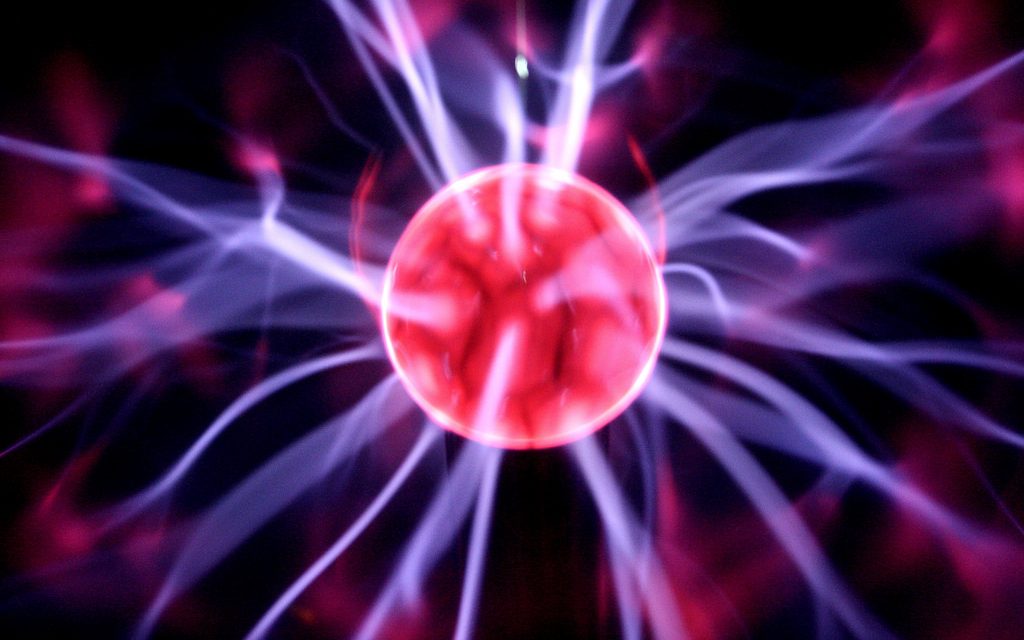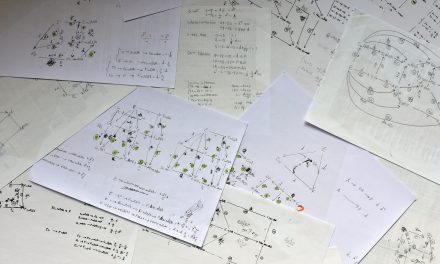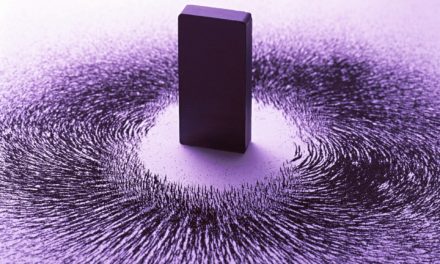Science holds a special place as a method designed to ask and answer questions about the tangible aspects of the physical world. Science is based on reproducible observations, controlled experiments, and theoretical reasoning. Science is fundamentally different from other ways of knowing because it is based on independently verifiable facts about physical phenomena, for example:
- Science differs from religion, which depends on revealed truth.
- Science differs from the arts, which depends on each artist’s unique vision.
- Science differs from political science and social science, in which the richness of the discipline results from a multiplicity of interpretations of past and future events.
- Science differs from pseudo-sciences, which are not based on reproducible and independently verifiable observations.
The process of science provides a powerful tool for observing the world, learning how it works, making predictions about future events, and discovering ways to modify our surroundings.
In the modern world, all citizens need to be scientifically literate. Scientific literacy helps consumers make informed decisions. Science content provides a basis for understanding how and why products work; the scientific process of inquiry provides a framework for critical thinking about personal choices.
Scientific literacy is advantageous for many reasons:
- Many jobs depend on science, as well as on the technologies that are developed from scientific discoveries. Modern medicine, law, and business all depend on science.
- Scientific literacy is the very foundation for teaching children about their world. Parents and teachers who are scientifically literate can reinforce a child’s natural curiosity by exploring the natural world together.
- Scientific literacy also allows a person to share the richness of humanity’s great ongoing adventure of discovery and exploration.
Every day, scientists are discovering and sharing new things that no human ever knew before. Everyone can achieve scientific literacy. The great principles of science can be presented without relying on complex vocabulary or mathematical abstraction. Scientific literacy is not technological literacy, nor isit the stepping stone exclusively for future scientists. You do not have to be a scientist to appreciate the great discoveries of science.
The Nature of Science
- Scientific literacy is also based on understanding the scientific method, the process of inquiry by which questions about the natural world are asked and answered.
The objectives of this series of post are to introduce the great principles of Science and to explore how scientists discovered these sweeping ideas, and to show how the great principles come into play in our lives, in often surprising and wonderful ways.
Science is a human endeavor, with its own distinctive organizational structures. The rigid division of science into separate departments may have hindered scientific literacy of nonscientists, but there is a rationale to this structure. In fact, there is a clear hierarchy of scientific disciplines.
Physics, the study of matter in motion, is first in this hierarchy, because the laws of physics must apply to every natural system, large or small, living or inanimate. Classical physics deals with the everyday phenomena of matter, energy, forces, and motion. Modern physics deals with realms beyond our daily experience: very small, very massive, and very fast objects require new physical laws, as coded in the fields of quantum mechanics, nuclear physics, particle physics, and relativity.
Chemistry is the study of atomic interactions, especially the study of chemical reactions and the formation of new materials. Modern chemistry is rooted in alchemical studies of the Middle Ages; it is an empirical science in which inspired guesswork often leads to major advances. Chemical research and chemical engineering are closely linked. It is often possible to scale up an experimental discovery made in a test tube to a full-scale manufacturing operation.
Earth science is the study of the origin, present state, and dynamic processes of the Earth, as well as other nearby planets. Earth science is a young field that grew out of the practical experience of prospecting and mining. The two major fields of earth science include:
- Geology, the study of rocks and soils and their distribution.
- Geophysics, the study of earth’s dynamic processes, such as tides, hurricanes, and earthquakes.
Biology is the study of living systems, which are by far the most complex objects we know. Because of its importance to health and medicine, biology is the largest and best funded of the sciences. Biology is an extremely diverse discipline because there are many ways to study living things. The most obvious applications of biology are in health and medicine.
In spite of the formal academic separation of science disciplines into physics, chemistry, earth science, and biology, the natural world is integrated and knows no such boundaries.
In the following series of posts, I would like to present some of the key concepts of science that everyone should be cognizant of.
The Ordered Universe
Science is a human endeavor characterized by luck and intuition, as well as mistakes and misperceptions. Honest errors in technique or execution are an inevitable part of the scientific process. The demand for reproducibility eventually eliminates these mistakes. By the same token scientific fraud is rare because the scientific method and rigor ensures that such cases will eventually be discovered and corrected.
To modern scientists, each observation and measurement represents an objective, verifiable truth; each measurement thus has meaning. But the importance of observation has not always been obvious or widely accepted.
The Greek philosopher Aristotle (c. 384– 322 B.C.), who was a student of Plato and tutor of Alexander the Great, recognized that the senses play an important role in understanding the natural world. But to him and to his followers, logic and reason, rather than our fallible senses, were the ultimate arbiters of truth. Many scholars prior to about 1650 accepted the writings of Aristotle and other ancient authorities in preference to observations. Galileo, for example, met resistance in the early 1600s when he first used a telescope to observe the heavens. After he discovered supposed “imperfections” in the heavens (features such as sunspots and craters on the Moon), some of his contemporaries refused to look through the telescope for themselves.
Many aspects of the physical universe are regular and predictable. While many scholars have questioned the reliability of the senses, everyone relies to some extent on the predictability of the physical world. The simplest kind of verifiable observations are events that happen over and over again in our lives. Objects fall when dropped and adopt predictable curving paths when thrown. Most astronomical objects also have predictable paths. Some ancient societies displayed their belief in the predictability of the Sun and Moon by constructing large monuments in which the positions of massive stones were aligned with key events in the calendar.
One of the earliest examples of human’s faith in the predictability of nature is found at Newgrange, Ireland, the site of a 5000-year-old burial tomb of an ancient Irish leader. Stonehenge, the great monument on southern England’s Salisbury Plain, also served as an elaborate and sophisticated calendar. Science depends on maintaining meticulous records of observations. Such was the lifelong task of the encyclopedist, Gaius Plinus Secundus (AD 23–79), better known as Pliny the Elder. Pliny led a rich and varied life as a cavalry officer in Germany, a naval commander at Naples, a lawyer, and as an administrator in Rome’s Spanish colonies. He is best remembered for his encyclopedic Natural History, which is divided into 37 books, each of which tabulates facts known to him directly or through reliable sources. Pliny died while observing an eruption of Mt. Vesuvius in AD 79.
To many ancient cultures, knowing the positions of the Moon and planets was of great importance both for astrological predictions and for navigation. The thousands of visible stars form a constantly rotating backdrop of constellations against which planetary motions can be plotted. The position of a planet can be measured night-by-night by its position relative to the stars. Planetary motions are complex. Mars, for example, appears to move forward through the Zodiac for much of the year, only to slow and backtrack every few months. Explaining this “retrograde” motion was the major challenge in devising models of the solar system.
One of the first descriptions of the heavens that led to testable predictions of planetary positions was the extremely successful model of Ptolemy of Alexandria (c. AD 100–170). Ptolemy, an Egyptian-born Greek, collected his own observations along with those of earlier Babylonian and Greek astronomers. Ptolemy argued that the Earth must be at the stationary center of the universe. The Ptolemaic model postulated perfect circular orbits on which smaller circular paths (epicycles) were superimposed. The use of circular orbits was dictated by a belief in the perfection of the heavens. In spite of its complexity, the Ptolemaic system was reasonably successful in predicting planetary positions, and it was employed for more than 1400 years. It was not until the 1500s that new, more precise observations and application of the scientific method led to general acceptance of a competing model.
Science is a collective human endeavor, advanced by thousands of little-known researchers who, step-by-step, add to the store of human knowledge. Yet the history of science often must focus on the seminal contributions of a few extraordinary individuals who played pivotal roles in synthesizing previous ideas. Let us look at the enormous contribution of these scientists from 15th- and 16th-century Europe: Nicolas Copernicus, Tycho Brahe, Johannes Kepler, and Galileo Galilei.
Polish astronomer Nicolas Copernicus (1473–1543) was trained in theology and spent nearly half a century working for the Catholic church. Yet, for reasons that remain uncertain, he devoted much of his life to constructing a mathematical model of the solar system in which the Earth and other planets orbit the Sun, a rival hypothesis to the prevailing Ptolemaic (also Biblical, as when the Bible was written Ptolemic ideas of cosmology was the prevailing wisdom) Earth-centered model. Copernicus never sought personal recognition for this theoretical scholarly effort, and the model remained unpublished until 1543, the year of his death. Part of his reluctance was the fear of reprisal from the church, as his ideas were against church doctrine.
In his great work, “On the Revolutions of the Celestial Spheres”, Copernicus proposed the modern model, with the Earth and other planets orbiting the Sun. (In fact this book was so seminal, now we use the word “revolution” as a synonym for great upheaval or uprising) He noted that for the stars to orbit the Earth, they would have to travel at enormous speeds. The model explained the retrograde motion of Mars and other planets, which was a consequence of the Earth swinging from one side of the Sun to the other during its orbit around the Sun.
The model still relied on perfect circular orbits and small epicycles. The Copernican model led to greatly improved predictions of planetary positions, which led to its acceptance. (Interestingly, the year 1543 also saw the publication of the seminal work in human anatomy, On the Fabric of the Human Body, by the great Flemish physician Andreas Vesalius (1514–1564), with magnificent illustrations crafted in Titian’s studio).
The Copernican model of the solar system had to be tested, and that task fell principally to Danish astronomer Tycho Brahe (1546–1601). Tycho, as he is known, advanced the field by designing and constructing greatly improved astronomical instruments. Tycho led a remarkable life. Abducted in childhood by his childless uncle, he received the best possible education and rose to great fame. He first came into prominence in 1572 at the age of 27, when he discovered a supernova in the constellation Cassiopoea. King Frederick II of Denmark and Norway rewarded him by giving him title to an island between Denmark and Sweden, and building him a castle and observatory.
Tycho Brahe’s improved instruments allowed him to test the predictions of both the Ptolemaic and Copernican systems. His newly designed instruments reduced observational errors by a factor of 20. He revealed discrepancies in the predictions of both the Ptolemaic and Copernican systems.
Upon his death, Tycho Brahe’s data came into the hands of his mathematically gifted assistant, Johannes Kepler (1571–1630). Kepler had become Tycho’s assistant in 1600, and he carried on the work of observation and analyses that his mentor had begun.
Kepler derived three empirical laws of planetary motion that provided a mathematical description of solar system orbits:
- Planetary orbits are elliptical with the Sun at one focus.
- An imaginary line from a planet to the Sun sweeps out equal areas in equal times.
- The square of a planet’s orbital period (its “year”) is proportional to the cube of its mean distance from the Sun.
These laws placed the Copernican model on a firm mathematical footing. In introducing these ideas, Kepler expressed his deep conviction that the universe holds a deep order. Yet, in spite of the mathematical logic and order that Kepler brought to the heavens, he still had to contend with a superstitious world. In 1615, while he was unlocking the secret to the universe with his mathematical skills, his elderly mother was jailed and brought to trial for “witchcraft” after being accused by a vindictive neighbor – such was the situation in medieval Europe, and the contribution of these scientists become more apparent when we reflect on the depth of ignorance and superstition prevailing in their times.
Galileo Galilei (1564–1642) transformed both the content and the methodology of science. He made major contributions to the fields of astronomy and physics, devised several ingenious practical inventions, and was a founder of experimental science. Galileo, son of a Florentine musician, began his schooling in medicine, but soon was drawn to mathematics and natural philosophy. He was a brilliant thinker, but could be tactless and thus made many enemies, both in academic circles and among the leading politicians of the day.
Galileo pioneered the use of the telescope, which he used to reveal unanticipated “imperfections” in the heavens. The wider and theological implications of the finding was revolutionary; till then most everyone assumed an imperfect “earthly realm” and a perfect “heavenly” realm. The fact that heavens could be as “imperfect” as the earth (with sun spots and craters on the moon), it became obvious the laws of the universe was indeed universal, later leading Newton to generalize the falling of apple and the rotation of the moon around earth are both same phenomenon.
Galileo published his observations in “The Starry Messenger” in 1610. Throughout the book, Galileo emphasizes the importance of modern observations over ancient authority. Galileo observed craters and mountains on the Moon, Saturn’s rings, and sunspots, all of which challenged the prevailing view that celestial objects are perfect spheres. He documented numerous stars not visible to the unaided eye, thus undermining the authority of Aristotle and other ancient scholars. Galileo also observed four moons of Jupiter, which demonstrated that not all celestial objects orbit the Earth.
His publication of these discoveries, and his bold support of the Copernican system in his Dialogue Concerning Two World Systems (1632), ultimately led to his famous heresy trial in 1633.
To many scientists, Galileo is honored first and foremost as a founder of experimental science. He sought to understand the mathematical laws that describe falling objects and built the foundation of terrestrial mechanics. Aristotle said that heavier objects fall faster than lighter objects, a claim that no one questioned for over 1400 years, till Galileo demonstrated was false. Realizing that free-falling objects move too fast to measure with the observation techniques of his day, Galileo devised an ingenious adjustable ramp to “dilute” the effects of gravity. This is known as the “rolling ball” experiment, which demonstrates that the distance traveled by a falling body is proportional to the square of the time of the fall.
Galileo discovered that the horizontal motion of a falling object is independent of its vertical motion. He tested these ideas experimentally by firing cannonballs off of a cliff and observing the curving path of the fall. Galileo’s empirical laws of terrestrial motions are not unlike those of Kepler for planetary motions. It remained for Isaac Newton to merge the empirical laws of Kepler and Galileo into one set of universal laws of forces and motions.
Part 2 of the article can be found here







